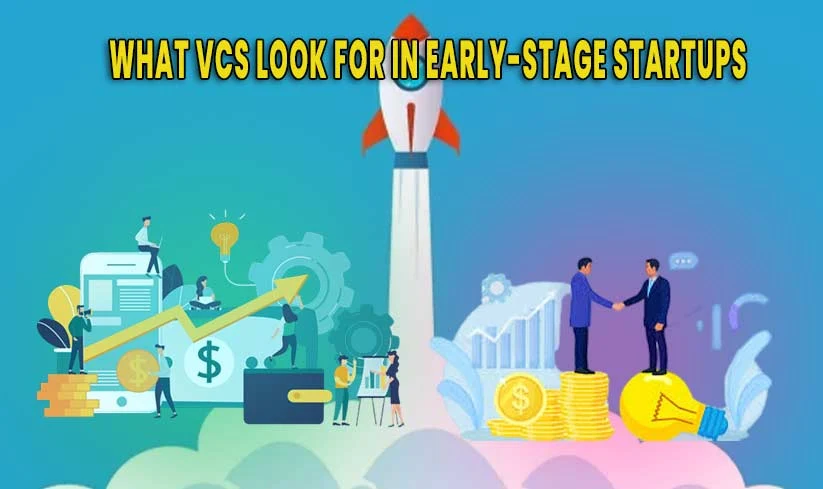What VCs Look for in Early-Stage Startups
Venture capitalists (VCs) play a crucial role in fueling innovation by investing in high-potential startups. However, securing VC funding is highly competitive, with only a small percentage of startups receiving investment. So, what exactly do VCs look for in early-stage startups?
This article explores the key factors VCs evaluate before writing a check, including the founding team, market opportunity, product differentiation, traction, scalability, and exit potential.
1. A Strong Founding Team
One of the most critical factors VCs consider is the founding team. Investors bet on people before products because even the best ideas can fail without the right execution.
Key Traits VCs Look for in Founders:
- Domain Expertise – Founders with deep industry knowledge and relevant experience are more likely to navigate challenges successfully.
- Execution Ability – VCs prefer founders who have a track record of building and scaling businesses.
- Resilience & Adaptability – Startups face constant obstacles, so investors look for founders who can pivot when necessary.
- Complementary Skills – A balanced team (e.g., a technical co-founder + a business-savvy co-founder) increases confidence in execution.
Example: Airbnb’s founders (Brian Chesky, Joe Gebbia, Nathan Blecharczyk) had a mix of design, engineering, and business skills, which helped them scale effectively.
2. A Large and Growing Market Opportunity
VCs seek startups targeting large and expanding markets because bigger markets offer more room for growth and higher returns.
How VCs Assess Market Potential:
- Total Addressable Market (TAM) – The overall revenue opportunity if the startup captures 100% market share.
- Serviceable Addressable Market (SAM) – The segment of TAM that the startup can realistically target.
- Growth Rate – Fast-growing markets (e.g., AI, fintech, climate tech) are more attractive.
Example: Uber tapped into the massive transportation market, which was ripe for disruption, making it an attractive investment.
3. A Unique and Defensible Product
A great product solves a real problem in a way that’s better, faster, or cheaper than existing solutions. VCs look for:
Key Product Considerations:
- Innovation – Does the product offer something truly new, or is it just an incremental improvement?
- Product-Market Fit (PMF) – Evidence that customers love and consistently use the product.
- Defensibility – Barriers to entry, such as patents, network effects, or proprietary technology.
Example: Tesla’s electric vehicles stood out due to superior battery tech and software integration, making them hard to replicate.
4. Early Traction and Customer Validation
Startups with real traction reduce investor risk. VCs look for signals that the business is gaining momentum.
Signs of Traction VCs Love:
- Revenue Growth – Consistent month-over-month (MoM) revenue increases.
- User Engagement – High retention rates, low churn, and strong customer love.
- Partnerships & Pilots – Deals with reputable companies validate demand.
Example: Slack gained rapid adoption through word-of-mouth, proving strong PMF before raising large VC rounds.
5. Scalability and Repeatable Growth
VCs invest in businesses that can scale quickly with relatively low marginal costs.
Scalability Indicators:
- High Gross Margins – Software (80-90% margins) is more scalable than hardware (30-50%).
- Low Customer Acquisition Cost (CAC) – Efficient marketing and viral growth.
- Network Effects – Products that get better with more users (e.g., social networks, marketplaces).
Example: Facebook scaled rapidly because each new user made the platform more valuable.
6. A Clear Path to Exit
VCs need a liquidity event (IPO or acquisition) to realize returns. They evaluate:
Potential Exit Opportunities:
- Acquisition Potential – Are there larger companies (e.g., Google, Amazon) that might buy this startup?
- IPO Readiness – Can the company go public in 5-10 years?
- Competitive Landscape – Are there comparable companies that have exited successfully?
Example: Instagram was acquired by Facebook for $1 billion, providing a massive return for its early investors.
7. A Compelling Pitch and Storytelling
Even with a great product and team, founders must communicate their vision effectively.
Elements of a Winning Pitch:
- Clear Problem & Solution – Articulate the pain point and how your startup solves it.
- Business Model – How will the company make money?
- Competitive Advantage – Why will you win against rivals?
- Financial Projections – Realistic, data-backed growth estimates.
Example: Steve Jobs’ iconic iPhone presentation in 2007 convinced investors and consumers alike of its revolutionary potential.
8. The Right VC Fit
Not all VCs are the same. Founders should seek investors who:
- Have Industry Expertise – VCs with sector knowledge add more value.
- Offer Strategic Support – Some VCs help with hiring, partnerships, and scaling.
- Align with Vision – Investors who believe in the long-term mission are better partners.
Example: Sequoia Capital’s early investment in WhatsApp aligned with their focus on disruptive communication tech.
Conclusion: How to Attract VC Funding
Founders who nail these areas significantly increase their chances of securing VC funding. If you’re building a startup, focus on these key criteria to stand out in a competitive investment landscape. Would you like help refining your pitch or strategy? Let’s discuss how to make your startup irresistible to VCs.








